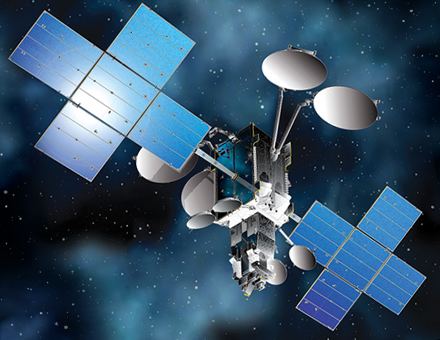Launch date 1 October 2015 Launch mass 6,440 kg | Operator NBN Launch mass 6,440 kg | |
 | ||
Similar GSAT‑18, ARSAT‑2, Star One D1, JCSAT‑RA, Intelsat 33e | ||
Sky muster nbn satellite is launched i the feed
Sky Muster are geostationary (GEO) communications satellites operated by NBN Co Limited and built by SSL. They were launched in 2015 and 2016 to provide fast broadband in very remote areas and offshore. They provide speeds up to 25/5 Mbps.
Contents
Each Sky Muster has 101 spot beams, which are focused satellite signals which are specially concentrated in power and cover a specific geographic area. The electromagnetic Ka band spot beams are used to carry information from the end users equipment on the ground to the satellites. Each satellite offers 80 gigabits per second of bandwidth. The two satellites will provide high-speed broadband service to 400,000 Australian homes and businesses in rural and remote Australia. The two satellites were designed to provide service for at least 15 years.
Sky Muster I (NBN-Co 1A) was launched on 1 October 2015 from the Guiana Space Centre in French Guiana, South America, alongside Argentina's ARSAT-2, on an Ariane 5ECA rocket.
Sky Muster I operates in geostationary orbit of 140° East. Its orbital position is 36,000 kilometres (22,000 mi) at the equator, north of Australia. Sky Muster I became operational in April 2016.
Sky Muster II (NBN-Co 1B) was launched on 5 October 2016, it will operate in geostationary orbit of 145° East.
Background
The two NBN satellites, Sky Muster (NBN-Co 1A) and Sky Muster II (NBN-Co 1B), were conceived in 2012 under the Gillard Labor government, as part of the original National Broadband Network scheme and NBN Co contracted Space Systems/Loral (SSL) to build and launch the two satellites as part of a total investment costing A$2 billion. The launch was conducted in accordance with the Space Activities Act 1998, which requires Ministerial approval for the launch of a space object from Australia or the launch of a space object by an Australian entity from an overseas location.
Bailey Brooks, a six-year old School of the Air student who lives on a cattle station 400 kilometres (250 mi) from Darwin, won a competition to draw a picture of how the satellite benefits rural Australians. Her drawing of the rocket was printed on the payload fairing, and her class named NBN-Co 1A "Sky Muster" as it would bring Australians together like a cattle muster. Interestingly, one of the engineers working on the ground network supporting Sky Muster internet access, is named Brook Bailey.
